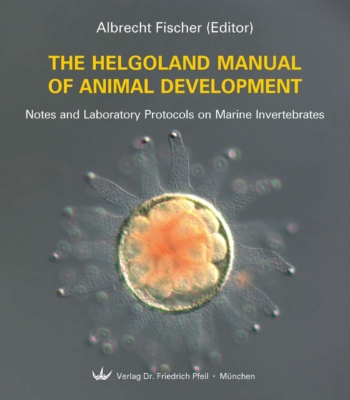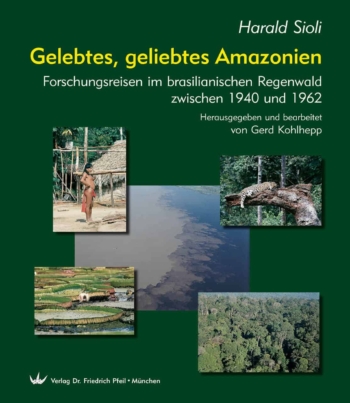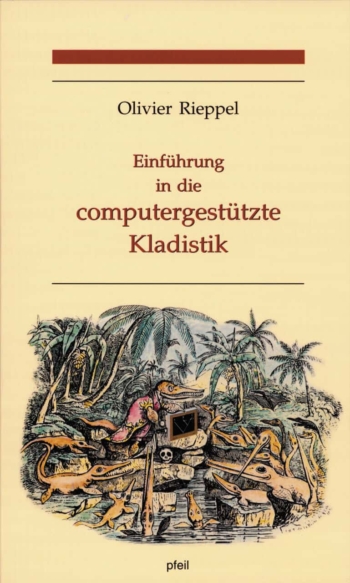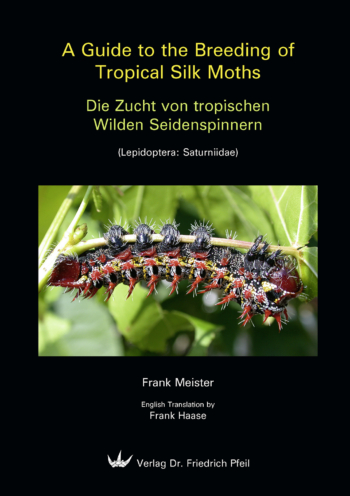Significance of stingrays (Chondrichthyes: Myliobatiformes) as prey of crocodilians (Reptilia: Crocodylia) in non-marine environments
Received 14 July 2019
Revised 25 September 2019
Accepted 17 May 2020
Published 26 June 2020
ZooBank LSID:
urn:lsid:zoobank.org:pub:0DB7E148-BC31-43FC-B3D6-90487D8CB123
German National Library URN:
urn:nbn:de:101:1-2020062611301931161523
DOI:
10.23788/IEF-1122
12,00 €
Adame, M. F., T. D. Jardine, B. Fry, D. Valdez, G. Lindner, J. Nadji & S. E. Bunn. 2018. Estuarine crocodiles in a tropical coastal floodplain obtain nutrition from terrestrial prey. PLoS One, 13: e0197159.
Antelo, R., J. Ayarzagüena & J. Castroviejo. 2008. Biología del cocodrilo o caimán del Orinoco (Crocodylus intermedius) en la Estación Biológica El Frío, Estado Apure (Venezuela). Publicaciones de la Asociación Amigos de Doñana, Sevilla, i-xxxix + 286 pp.
Barão-Nóbrega, J. A. L., B. Marioni, D. Dutra-Araújo, R. Botero-Arias, A. J. A. Nogueira, W. E. Magnusson & R. Da Silveira. 2016. Nest attendance influences the diet of nesting female spectacled caiman (Caiman crocodilus) in Central Amazonia, Brazil. Herpetological Journal, 26: 65-71.
Blanco, R. E., W. W. Jones & J. Villamil. 2015. The ‘death roll’ of giant fossil crocodyliforms (Crocodylomorpha: Neosuchia): allometric and skull strength analysis. Historical Biology, 27: 514-524.
Borteiro, C., F. Gutiérrez, M. Tedros & F. Kolenc. 2009. Food habits of the broad-snouted caiman (Caiman latirostris: Crocodylia, Alligatoridae) in northwestern Uruguay. Studies on Neotropical Fauna and Environment, 44: 31-36. Carvalho, M. R. 2016. Neotropical stingrays: family Potamotrygonidae. Pp. 619-655 in: P. R. Last, P. R., W. T. White, M. R.
Carvalho, B. Séret, M. F. W. Stehmann & G. J. P. Naylor (eds.), Rays of the world. Cornell University Press, Ithaca.
Chapman, D. D. & S. H. Gruber. 2002. A further observation of the prey-handling behavior of the great hammerhead shark, Sphyrna mokarran: predation upon the spotted eagle ray, Aetobatus narinari. Bulletin of Marine Science, 70: 947-952.
Compagno, L. J. V. & S. F. Cook. 1995. The exploitation and conservation of freshwater elasmobranchs: status of taxa and prospects for the future. Journal of Aquariculture and Aquatic Sciences, 7: 62-90.
Cott, H. B. 1961. Scientific results of an inquiry into the ecology and economic status of the Nile crocodile (Crocodilus niloticus) in Uganda and Northern Rhodesia. Transactions of the Zoological Society of London, 29: 211-356.
Cuvier, G. 1807. Sur les différentes espèces de crocodiles vivans et sur leurs caractères distinctifs. Annales du Muséum National d’Histoire Naturelle, 10: 8-86.
Da Silveira, R. & W. E. Magnusson. 1999. Diets of spectacled and black caiman in the Anavilhanas Archipelago, Central Amazonia, Brazil. Journal of Herpetology, 33: 181-192. Dall, S. R. X., A. M. Bell, D. I. Bolnick & F. L. W. Ratnieks. 2012. An evolutionary ecology of individual differences. Ecology Letters, 15: 1189-1198.
Daudin, F. M. 1802. Histoire naturelle, générale et particulière des reptiles; ouvrage faisant suite à l’Histoire naturelle générale et particulière, composée par Leclerc de Buffon, et rédigée par C. S. Sonnini, membre de plusiers sociétés savantes. Tome second. L’Imprimerie de F. Dufart, Paris, 432 pp., pls. 16-28.
Fish, F. E., S. A. Bostic, A. J. Nicastro & J. T. Beneski. 2007. Death roll of the alligator: mechanics of twist feeding in water. Journal of Experimental Biology, 210: 2811-2818.
Frazzetta, T. H. 1988. The mechanics of cutting and the form of shark teeth (Chondrichthyes, Elasmobranchii). Zoomorphology, 108: 93-107.
Freiberg, M. A. 1977. Reptilia Crocodilia o Loricata. Pp. 1-20 in: R. A. Ringuelet (ed.), Fauna de agua dulce de la República Argentina, Volumen XLII: Reptilia. Fundación para la Educación, la Ciencia y la Cultura, Buenos Aires.
Giraudo, A. R., A. Bortoluzzi & V. Arzamendia. 2006. Vertebrados tetrápodos de la Reserva y Sitio Ramsar “Esteros del Iberá” (Corrientes, Argentina): análisis de su composición y nuevos registros para especies amenazadas. Natura Neotropicalis, 37: 1-20.
Grant M. I., P. M. Kyne, C. A. Simpfendorfer, W. T. White & A. Chin. 2019. Categorising use patterns of non-marine environments by elasmobranchs and a review of their extinction risk. Reviews in Fish Biology and Fisheries, 29: 689-710.
Graves, M. L. 1819. Sur deux nouvelles espèces de crocodile. Annales Générales des Sciences Physiques, 2: 343-353.
Grigg, G. & D. Kirshner. 2015. Biology and evolution of crocodylians. Cornell University Press, Ithaca, 649 pp.
Heithaus, M. R. 2004. Predator-prey interactions. Pp. 487-521 in: J. C. Carrier, J. A. Musick & M. R. Heithaus (eds.), Biology of sharks and their relatives. CRC Press, Boca Raton.
Hildebrand, S. F. & W. C. Schroeder. 1928. Fishes of Chesapeake Bay. Bulletin of the Bureau of Fisheries, 43: 1-366.
Horna, J. V., R. Cintra & P. Vazquez Ruesta. 2001. Feeding ecology of black caiman Melanosuchus niger in a western Amazonian forest: the effects of ontogeny and seasonality on diet composition. Ecotropica, 7: 1-11.
Hyvärinen, P. & A. Huusko. 2006. Diet of brown trout in relation to variation in abundance and size of pelagic fish prey. Journal of Fish Biology, 68: 87-98.
Ingram, T., R. Costa-Pereira & M. S. Araújo. 2018. The dimensionality of individual niche variation. Ecology, 99: 536-549.
Kirchhoff, K. N., T. Hauffe, B. Stelbrink, C. Albrecht & T. Wilke. 2017. Evolutionary bottlenecks in brackish water habitats drive the colonization of fresh water by stingrays. Journal of Evolutionary Biology, 30: 1576-1591.
Kirchhoff, K. N., I. Klingelhöfer, H.-M. Dahse, G. Morlock & T. Wilke. 2014. Maturity-related changes in venom toxicity of the freshwater stingray Potamotrygon leopoldi. Toxicon, 92: 97-101.
Krefft, G. 1873. Remarks on Australian crocodiles, and description of a new species. Proceedings of the Zoological Society of London, 1873: 334-335.
Laurenti, J. N. 1768. Specimen medicum, exhibens synopsin reptilium emendatam cum experimentis circa venena et antidota reptilium austriacorum. Joan Thomae, Viennae [= Wien], 214 pp.
Laverty, T. M. & A. P. Dobson. 2013. Dietary overlap between black caimans and spectacled caimans in the Peruvian Amazon. Herpetologica, 69: 91-101.
Lesueur, C. A. 1824. Description of several species of the Linnaean genus Raia, of North America. Journal of the Academy of Natural Sciences of Philadelphia, 4 (Part 1): 100-121, pls. 4-6.
Linnaeus, C. 1758. Systema naturae per regna tria naturae, secundum classes, ordines, genera, species, cum characteribus, differentiis, synonymis, locis. Tomus I. Editio decima, reformata. Salvius, Holmiae, 824 pp.
Loboda, T. S. & M. R. Carvalho. 2013. Systematic revision of the Potamotrygon motoro (Müller & Henle, 1841) species complex in the Paraná-Paraguay basin, with description of two new ocellated species (Chondrichthyes: Myliobatiformes: Potamotrygonidae). Neotropical Ichthyology, 11: 693-737.
Loiselle, S. A., L. Bracchini, A. Cózar, A. M. Dattilo & C. Rossi. 2005. Extensive spatial analysis of the light environment in a subtropical shallow lake, Laguna Iberá, Argentina. Hydrobiologia, 534: 181-191.
Lucifora, L. O., L. Balboni, P. A. Scarabotti, F. A. Alonso, D. E. Sabadin, A. Solari, F. Vargas, S. A. Barbini, E. Mabragaña & J. M. Díaz de Astarloa. 2017. Decline or stability of obligate freshwater elasmobranchs following high fishing pressure. Biological Conservation, 210: 293-298.
Lucifora, L. O., M. R. Carvalho, P. M. Kyne & W. T. White. 2015. Freshwater sharks and rays. Current Biology, 25: R971-R979.
Lucifora, L. O., V. B. García, R. C. Menni, A. H. Escalante & N. M. Hozbor. 2009. Effects of body size, age and maturity stage on diet in a large shark: ecological and applied implications. Ecological Research, 24: 109-118.
Magnusson, W. E., E. V. Silva & A. P. Lima. 1987. Diets of Amazonian crocodilians. Journal of Herpetology, 21: 85-95.
Moldowan, P. D., T. M. Laverty, C. J. Emmans & R. C. Stanley. 2016. Diet, gastric parasitism, and injuries of caimans (Caiman, Melanosuchus, and Paleosuchus) in the Peruvian Amazon. South American Journal of Herpetology, 11: 176-182.
Morgan, D. L., R. Somaweera, A. C. Gleiss, S. J. Beatty & J. M. Whitty. 2017. An upstream migration fought with danger: freshwater sawfish fending off sharks and crocodiles. Ecology, 98: 1465-1467.
Müller, J. & F. G. J. Henle. 1838-1841. Systematische Beschreibung der Plagiostomen. Veit, Berlin, i-xxii + 200 pp., plus 60 unnumbered plates.
Nair, T., J. B. Thorbjarnarson, P. Aust & J. Krishnaswamy. 2012. Rigorous gharial population estimation in the Chambal: implications for conservation and management of a globally threatened crocodilian. Journal of Applied Ecology, 49: 1046-1054.
Neiff, J. J. & A. S. G. Poi de Neiff. 2006. Situación ambiental en la ecorregión Iberá. Pp. 177-184 in: A. Brown, U. Martinez Ortiz, M. Acerbi & J. Corcuera (eds.), La situación ambiental argentina 2005. Fundación Vida Silvestre Argentina, Buenos Aires.
Nifong, J. C. & R. H. Lowers. 2017. Reciprocal intraguild predation between Alligator mississippiensis (American alligator) and Elasmobranchii in the southeastern United States. Southeastern Naturalist, 16: 383-396.
Nilsson, P. A. & C. Brönmark. 2000. Prey vulnerability to a gape-size limited predator: behavioural and morphological impacts on northern pike piscivory. Oikos, 88: 539-546.
Piña, C. I., P. Siroski, G. Príncipe & M. Simoncini. 2010. Populations status of Caiman yacare and Caiman latirostris in North Argentina. Crocodilia, 1: 1-15.
Reynolds, N. 2007. Dietary competition between the black caiman (Melanosuchus niger) and the spectacled caiman (Caiman crocodilus) within the Lago Preto Reserve, Peru. BSc dissertation, University of Kent, Canterbury, 40 pp.
Rosenblatt, A. E., J. C. Nifong, M. R. Heithaus, F. J. Mazzotti, M. S. Cherkiss, B. M. Jeffery, R. M. Elsey, R. A. Decker, B. R. Silliman, L. J. Guillette Jr., R. H. Lowers & J. C. Larson. 2015. Factors affecting individual foraging specialization and temporal diet stability across the range of a large “generalist” apex predator. Oecologia, 178: 5-16.
Santos, S. A., M. S. Nogueira, M. S. Pinheiro, Z. Campos, W. E. Magnusson & G. M. Mourão. 1996. Diets of Caiman crocodilus yacare from different habitats in the Brazilian Pantanal. Herpetological Journal, 6: 111-117.
Schneider, J. G. 1801. Historiae Amphibiorum naturalis et literariae. Fasciculus secundus continens Crocodilos, Scincos, Chamaesauras, Boas, Pseudoboas, Elapes, Angues, Amphisbaenas et Caecilias. Frommann et Wesselhoeft, Jena, i-vi + 364 pp.
Shine, R. & L.-X. Sun. 2003. Attack strategy of an ambush predator: which attributes of the prey trigger a pit-viper’s strike? Functional Ecology, 17: 340-348.
Silva, J. P. C. B. & T. S. Loboda. 2019. Potamotrygon marquesi, a new species of neotropical freshwater stingray (Potamotrygonidae) from the Brazilian Amazon Basin. Journal of Fish Biology, 95: 594-612.
Speed, C. W., M. G. Meekan & C. J. A. Bradshaw, 2007. Spot the match – wildlife photo-identification using information theory. Frontiers in Zoology, 4: 2 (1-11).
Spix, J. B. de. 1825. Animalia nova sive species novae lacertarum quas in itinere per Brasiliam annis MDCCCXVII-MDCCCXX jussu et auspiciis Maximilani Josephi I. Bavariae regis suscepto / collegit et descripsit Dr. J. B. de Spix.. Franc. Seraph. Hübschmanni, Monachii [= Munich], IV-26 pp., 28 pls.
Staton, M. A. & J. R. Dixon. 1975. Studies on the dry season biology of Caiman crocodilus crocodilus from the Venezuelan Llanos. Memorias de la Sociedad de Ciencias Naturales La Salle, 35: 237-266.
Strong, W. R., F. F. Snelson & S. H. Gruber. 1990. Hammerhead shark predation on stingrays: an observation of prey handling by Sphyrna mokarran. Copeia, 1990: 836-840.
Tamarack, J. L. 1993. Alligator mississippiensis (American alligator) diet. Herpetological Review, 24: 57.
Thorbjarnarson, J. B. 1989. Ecology of the American crocodile, Crocodylus acutus. Pp. 228-259 in: P. Hall (ed.), Crocodiles: their ecology, management, and conservation. International Union for Conservation of Nature and Natural Resources, Gland.
Thorbjarnarson, J. B. 1993. Diet of the spectacled caiman (Caiman crocodilus) in the Central Venezuelan Llanos. Herpetologica, 49: 108-117.
Thorson, T. B. 1972. The status of the bull shark, Carcharhinus leucas, in the Amazon River. Copeia, 1972: 601-605.
Vincent, S. E., B. R. Moon, R. Shine & A. Herrel. 2006. The functional meaning of “prey size” in water snakes (Nerodia fasciata, Colubridae). Oecologia, 147: 204-211.
White, W. T. & E. Sommerville. 2010. Elasmobranchs of tropical marine ecosystems. Pp. 159-239 in: J. C. Carrier, J. A. Musick & M. R. Heithaus (eds.), Biology of sharks and their relatives II: biodiversity, adaptive physiology, and conservation. CRC Press, Boca Raton.
Whitfield, A. K. & S. J. M. Blaber. 1979. Predation on striped mullet (Mugil cephalus) by Crocodylus niloticus at St. Lucia, South Africa. Copeia, 1979: 266-269.
Sie müssen angemeldet sein, um eine Rezension veröffentlichen zu können.
„*“ zeigt erforderliche Felder an
Ähnliche Produkte
-

The Helgoland Manual of Animal Development
38,00 €zzgl. Versandkosten / Versandkostenfrei in D
-

Phylogenetische Systematik der Wirbeltiere
98,00 €zzgl. Versandkosten / Versandkostenfrei in D
-

Gelebtes, geliebtes Amazonien
38,00 €zzgl. Versandkosten / Versandkostenfrei in D
-

Einführung in die computergestützte Kladistik
13,00 €zzgl. Versandkosten / Versandkostenfrei in D
-

A Guide to the Breeding of Tropical Silk Moths – Die Zucht von tropischen Wilden Seidenspinnern
39,00 €zzgl. Versandkosten / Versandkostenfrei in D
Wir sind gerne für Sie da
Verlag Dr. Friedrich Pfeil
Hauptstraße 12B
5232 Bergkirchen OT Günding – Germany
Tel.: +49 8131 61 46 590
Fax: +49 8131 61 46 591
E-Mail: info@pfeil-verlag.de


Rezensionen
Es gibt noch keine Rezensionen.